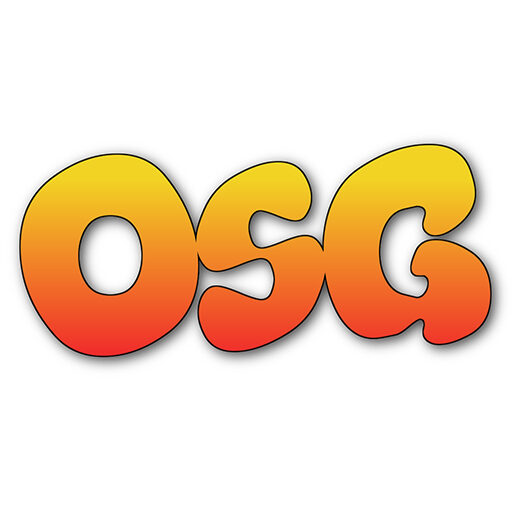11. A boat moves with a speed of 13 km/h downstream and 7 km/h upstream. Find the speed of the boat and stream.
Sol:
B + W = 13
B – W = 7
B = 10 km/h
W = 3 km/h Answer
12. A man can row 45 km upstream and 66 km downstream in 15 h. Also, he can row 65 km upstream and 77 km downstream in 20 h. Find the speed of man in still water & rate of current.
Sol:
([\frac{{45}}{{B – W}} + \frac{{66}}{{B + W}} = 15\) ………..(i)
& \(\frac{{65}}{{B – W}} + \frac{{77}}{{B + W}} = 20\) …………(ii)
Let \(\frac{1}{{B – W}} = x\) & \(\frac{1}{{B + W}} = y\)
45x + 66y = 15
65x + 77y = 20
on solving above two equation we get
x = \(\frac{1}{5}\) y = \(\frac{1}{11}\)
\(\frac{1}{{B – W}} = \frac{1}{5}\) \(\frac{1}{{B + W}} = \frac{1}{11}\)
B – W = 5 B + W = 11
∴ B = 8 km/h & W = 3 km/h Answer
13. A motorboat went downstream for 32 km and immediately returned. It took the boat twice as long to make the return trip. If the speed of the river flow were twice as high, the trip down stream and back would take 768 minutes. Find the speed of the boat in still water and the speed of the river flow ?
Sol:
\(\frac{{B – W}}{{B + W}} = \frac{1}{2}\) ⟹ B = 3W
768 min = \(\frac{{64}}{5}\) h
W₁ = 2W
d = \(\frac{{{B^2} – {W_1}^2}}{{2B}} \times \frac{{64}}{5}\)
32 = \(\frac{{{B^2} – {{(2W)}^2}}}{{2B}} \times \frac{{64}}{5}\)
5B = B² – 4W²
5(3W) = (3W)² – 4W²
15W = 5W²
W = 3 km/h Answer
& B = 9 km/h Answer
14. A boat sails downstream from point A to point B, which is 20 km away from A and then returnes to A. If the actual speed of the boat (in still water) is 3 km/h, the trip from A to B takes 5 hours less than that from B to A. What must be the actual speed of the boat for the trip from A to B to take exactly \(\frac{{400}}{3}\) min.
Sol:
\(\frac{{20}}{{3 – W}} – \frac{{20}}{{3 + W}} = 5\)
\(\frac{{2W}}{{9 – {W^2}}} = \frac{1}{4}\)
⟹ W = 1 km/h
In 2ⁿᵈ case:
B + W = \(\frac{{20}}{{\frac{{400}}{3}}} \times 60\)
B + 1 = 9
B = 8 km/h Answer
15. In a stream, B lies in between A and C such that it is equidistant from both A and C. A boat can go from A to B and back in 9.2 h while it goes from A to C in 12 h. How long would it take to go from C to A ?
Sol:
∴ time taken to go from C to A = 9.2 – 6 = 3.2 h
∴ time taken to go from B to A = 3.2 × 2 = 6.4h Answer
16. A, B, C are three town on a river which flows uniformly. B is equidistant from A & C. Amit can row A to B and back in 10ᵗʰ and he can row from A to C in 6ᵗʰ. Compare the speed of his boat in still water with that of the river ?
Sol:
∴ time taken to row from B to A = 10 – 3 = 7 h
So time taken to row from C to A = 7 × 2 = 14 h
\(\frac{{B – W}}{{B + W}} = \frac{3}{7}\)
7B – 7W = 3B + 3W
4B = 10W
\(\frac{B}{W} = \frac{5}{2}\) Answer
17. The speed of a boat in still water is 9 km/h. A boat goes 64 km and back to its starting point in 16 hours. find the speed of the stream.
Sol:
\(64 = \frac{{{9^2} – {W^2}}}{{2 \times 9}} \times 16\)
72 = 81 – W²
w² = 9
W = 3 km/h Answer
18. The normal speed of a boat in still water is 5 times the speed of the river. The boat goes upstream from A to B and takes 3 h to reach B. By what percent should the boat increase/decrease its speed if it reaches from B to A downstream in 4 h.
Sol:
B = 5W
d = (B – W) × 3 = (5W – W) × 3 = 12W
initial downstream speed = 5W + W = 6W
∴ Speed to reach B to A downstream in 4 h = \(\frac{{12W}}{4}\) = 3W
∴ Final downstream speed = 3W
∴ required % reduction in speed = \(\frac{{6W – 3W}}{{6W}} \times 100\)%
= 50% ↓ Answer
19. The ratio of time taken by a boat to row a certain distance downstream, and upstream is 4 : 7. If the speed of current is \(2\frac{2}{{11}}\) km/h then what is the speed of boat in still water.
Sol:
\(\frac{{B + W}}{{B – W}} = \frac{7}{4}\)
7B – 7W = 4B + 4W
\(\frac{B}{W} = \frac{{11}}{4}\)
∴ B = \(\frac{{11}}{3}W\) = \(\frac{{11}}{3} \times 2\frac{2}{{11}} = \frac{{11}}{3} \times \frac{{24}}{{11}}\)
B = 8 km/h Answer
20. A motorboat moves from point A to point B and back again. If the speed of the boat in still water is doubled, then the trip from A to B and back again would take 33.33% of the time that the motorboat usually spends in the journey. How many times is their actual speed of the motorboat higher than the speed of the river flow.
Sol:
\(d = \frac{{{B^2} – {W^2}}}{{2B}} \times T = \frac{{{{(2B)}^2} – {W^2}}}{{2 \times (2B)}} \times \frac{1}{3}(T)\)
6B² – 6W² = 4B² – W²
2B² = 5W²
\(\frac{B}{W} = \sqrt {\frac{5}{2}} \) Answer
